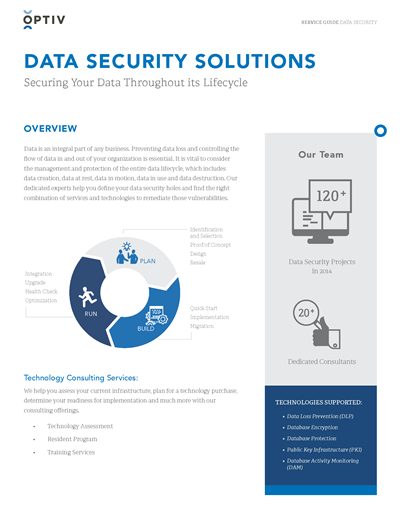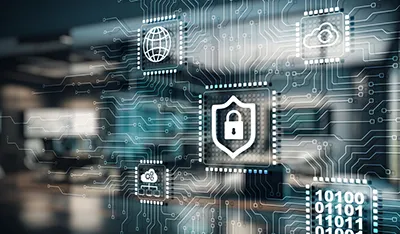Just How Correct Information Damage Adds To Robust Computer Protection Providers and Mitigates Threats of Information Breaches
In today's digital landscape, the importance of proper data damage can not be overemphasized, as it works as an essential part of thorough computer system safety services. By implementing efficient information erasure methods, companies not only shield sensitive information from unauthorized access but additionally strengthen their compliance with regulatory structures - data destruction. Nevertheless, the implications of insufficient data damage extend beyond mere compliance; they can greatly impact an organization's cybersecurity position and reputation. Understanding these dimensions increases crucial inquiries regarding the methods in position and their performance in an era of escalating cyber dangers.
Relevance of Data Damage
In today's digital landscape, the value of data destruction can not be overstated. As organizations progressively rely upon electronic properties, the possible threats associated with data breaches and unauthorized gain access to intensify. Efficient information damage is an essential part of an extensive details protection technique, safeguarding sensitive details from falling under the hands of malicious stars.
When data is no more needed, just erasing data or formatting difficult drives is not enough. Recurring data can usually be recouped using readily offered tools, posing significant risks to both companies and individuals. This emphasizes the need for robust data damage methods that make sure all information is irretrievably eliminated.
Furthermore, regulatory conformity requireds, such as GDPR and HIPAA, emphasize the obligation to safeguard delicate information, including its correct disposal. Non-compliance can cause severe lawful consequences and financial penalties. data destruction. Hence, incorporating effective information damage protocols not just enhances protection however also strengthens an organization's credibility and credibility

Methods of Secure Information Erasure
Several reliable approaches of safe and secure information erasure can be used to make sure that delicate details is permanently gotten rid of from storage devices. One commonly recognized technique is data overwriting, which includes replacing existing information with arbitrary patterns multiple times. This approach significantly minimizes the possibilities of data recuperation, although it may not work versus innovative forensic methods.

Physical destruction is likewise a trustworthy technique, where storage space gadgets are rendered unusable with shredding, squashing, or incineration. This approach makes sure that information can not be recuperated whatsoever but needs cautious handling of hazardous materials.
Lastly, specialized software devices created for safe and secure information erasure supply functionalities that follow different erasure requirements. These tools frequently include features like confirmation procedures to verify successful information devastation.
Employing these approaches in mix can boost data security and minimize the dangers connected with information breaches, making certain that sensitive details is not unintentionally exposed.
Legal and Compliance Factors To Consider
The approaches employed for secure information erasure not just serve to secure sensitive info but likewise needs to align with legal and conformity frameworks governing information security. Organizations are needed to follow various laws, such as the General Data Defense Regulation (GDPR), the Wellness Insurance Policy Transportability and Accountability Act (HIPAA), and the Payment Card Industry Data Security Criterion (PCI DSS) These regulations mandate particular protocols for information managing and destruction, guaranteeing that delicate and personal information is irretrievably erased when no more needed.
Failure to follow these legal requirements can cause substantial penalties, consisting of penalties and reputational damage. Furthermore, organizations have to maintain records of information devastation procedures, demonstrating conformity throughout audits or investigations. This paperwork not just secures versus legal effects however additionally enhances websites count on with customers and stakeholders, showcasing a dedication to information safety.
Including lawful and compliance considerations into information damage methods is crucial for any organization. It lessens the threat of data violations and highlights a proactive this content strategy to securing delicate details, eventually cultivating a culture of safety and security and responsibility across the company.
Effect On Cybersecurity Stance
Efficient data destruction significantly improves an organization's cybersecurity pose by reducing the prospective strike surface area for cyber threats. When sensitive data is not effectively destroyed, it stays accessible to destructive stars who can manipulate this information for unauthorized accessibility, identification burglary, or corporate reconnaissance. By applying durable data devastation methods, companies can effectively minimize the risk of information breaches and improve their total security framework.
Moreover, the protected disposal of unnecessary or outdated data not only safeguards delicate information yet likewise helps companies follow industry laws and requirements. Failure to sufficiently destroy information can lead to serious lawful effects and reputational damage, more endangering an organization's cybersecurity position.

Ultimately, focusing on efficient data destruction is important for fostering a robust cybersecurity stance, making certain that organizations stay watchful versus developing cyber hazards while safeguarding their important properties and stakeholders.
Finest Practices for Organizations
Applying finest techniques for data destruction is important for organizations aiming to safeguard sensitive details and alleviate cybersecurity dangers. First and leading, organizations must develop a detailed data devastation plan that lays out treatments and obligations. This policy needs to adhere to relevant laws, such as GDPR or HIPAA, guaranteeing lawful conformity.
Secondly, it hop over to these guys is vital to use authorized data sanitization techniques, consisting of information wiping, degaussing, and physical damage, tailored to the kind of information and storage space tool. Using licensed experts for data destruction services improves the reliability of these methods.
Moreover, companies should preserve an in-depth inventory of all information storage space tools, ensuring that all out-of-date or replaced devices undergoes damage. Regular audits of information damage practices can assist identify weak points and improve compliance.
Employee training is another critical aspect, as team must understand the relevance of data damage and stick to developed methods. Finally, companies must record all information devastation tasks to supply responsibility and traceability, which can be indispensable during audits or in case of a breach.
Conclusion

One extensively recognized method is data overwriting, which entails changing existing information with arbitrary patterns several times.The approaches utilized for protected data erasure not only serve to shield delicate details yet also needs to straighten with legal and compliance frameworks governing data protection. These policies mandate specific procedures for information handling and destruction, guaranteeing that delicate and individual information is irretrievably removed when no longer needed.
By executing robust information destruction protocols, companies can effectively reduce the threat of data violations and improve their total safety and security structure.
In conclusion, proper information damage is essential for boosting computer system protection solutions and alleviating the dangers associated with data breaches. - data destruction